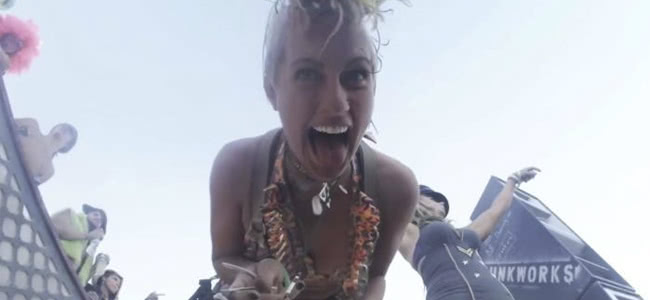Remember that viral video of the drone that just so happened to crash land over Burning Man? It was an incredible and uncanny piece of found footage, kind of similar to that clip of lightning almost hitting a girl in Sydney that was everywhere a couple of months back.
Or like that man fighting off a great white in Sydney Harbour, remember that? They were everywhere these videos. In your news feeds on Facebook and Twitter, even in the actual news being broadcast on television. And they were all made by the same Melbourne production studio.
Yes, if you had the unshakable feeling that all of these videos were fake, give yourself a pat on the back. As ABC News reports, The Woolshed Co, a Melbourne-based creative studio, created eight different viral videos as part of a two-year social experiment.
The Woolshed wanted to explore the concept of virality and what makes something spread, starting with the clip of a man fighting off the shark in Sydney Harbour. According to managing director Dave Christison, the videos were not brand-affiliated.
“Really just an organic kind of experiment to see, can we make some noise in the viral world?” he said. According to Christison, the collective kept companies out of it so they could push boundaries to see what kind of things go viral.
“The opportunities are kind of endless, but the idea was to pursue it as an experiment instead of a commercial venture so that we had to opportunity to take risks and try different things and learn from our mistakes,” he said.
[include_post id=”477120″]
According to ABC News, the Woolshed’s fakes were viewed more than 205 million times in 180 countries and picked up by news networks around the world. Naturally, the clips awakened a lot of skeptics and they had a lot of commenters calling ‘fake’.
“It didn’t matter if it was authenticity of the concept, the production value or something else all together. As long as there was a debate, that fuelled the fire,” said Christison.
“It gets people that don’t believe it. They watch it again and again and again. They share it and share it with other people to create debate about whether its real or not and then that’s usually what attracts some level of newsworthiness to it.”

































